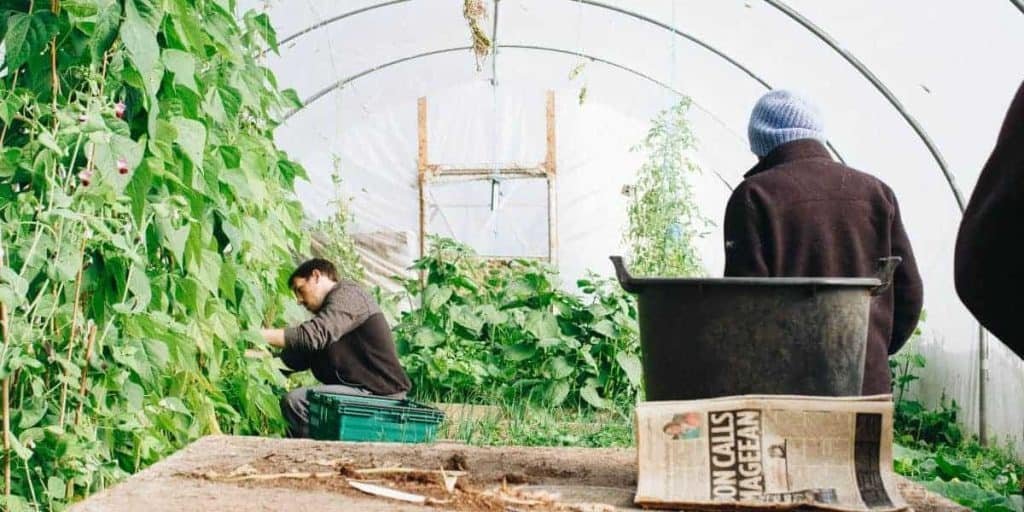Welcome to the world of modern homesteaders! In this article, we will explore the growing trend of individuals and families who are embracing self-sufficiency in the digital age. Whether you’re a city dweller dreaming of a simpler life or a rural resident looking to enhance your sustainable practices, this guide will provide you with valuable insights and tips to become a successful modern homesteader.
1. What Does it Mean to be a Modern Homesteader?
Being a modern homesteader means embracing a lifestyle that combines traditional homesteading practices with modern technology and conveniences. It’s about finding a balance between self-sufficiency and the benefits of living in the digital age. Modern homesteaders strive to produce their own food, generate renewable energy, and reduce their reliance on external resources.
While traditional homesteaders often lived in remote areas, modern homesteaders can be found in urban, suburban, and rural settings. They utilize small spaces, such as balconies, rooftops, and backyard gardens, to grow their own food. They also harness the power of technology to connect with like-minded individuals, learn new skills, and market their products.
2. Essential Skills for Modern Homesteaders
As a modern homesteader, there are several essential skills that you should develop to thrive in this lifestyle:
- Gardening: Learn how to grow your own fruits, vegetables, and herbs using organic and sustainable methods.
- Animal Husbandry: Raise chickens, goats, or bees to produce your own eggs, milk, honey, and more.
- Food Preservation: Master the art of canning, fermenting, and dehydrating to extend the shelf life of your harvest.
- Renewable Energy: Explore solar panels, wind turbines, and other renewable energy sources to reduce your reliance on the grid.
- DIY Projects: Develop basic carpentry, plumbing, and electrical skills to build and maintain your homestead infrastructure.
By acquiring these skills, you’ll be well-equipped to create a sustainable and self-sufficient homestead.
3. Challenges Faced by Modern Homesteaders
While the modern homesteading lifestyle offers numerous benefits, it also comes with its fair share of challenges. Here are some common obstacles that modern homesteaders may encounter:
- Time Management: Balancing the demands of work, family, and homesteading can be challenging. Prioritizing tasks and setting realistic goals is key.
- Space Limitations: Urban and suburban homesteaders often face limited space for gardening and animal husbandry. Creative solutions, such as vertical gardening and small-scale livestock raising, can help maximize space.
- Learning Curve: Acquiring new skills and knowledge takes time and effort. Be prepared to invest in continuous learning and experimentation.
- Weather Conditions: Unpredictable weather patterns can impact crop yields and animal health. Implementing strategies like crop rotation and building climate-controlled structures can mitigate these challenges.
- Community Support: Finding like-minded individuals and building a supportive community can be difficult, especially in areas where modern homesteading is less common. Online forums, social media groups, and local events can help connect with others who share your passion.
By acknowledging these challenges and developing strategies to overcome them, you’ll be better prepared to navigate the modern homesteading journey.
4. FAQs on Modern Homesteaders
Q: Can I be a modern homesteader if I live in a city?
A: Absolutely! Urban homesteading is a growing trend, with many individuals successfully practicing self-sufficiency in small spaces. Container gardening, vertical farming, and rooftop beekeeping are just a few examples of how urban dwellers can embrace the modern homesteading lifestyle.
Q: How much land do I need to start homesteading?
A: The amount of land you need depends on your goals and the activities you plan to engage in. While traditional homesteaders often had large plots of land, modern homesteaders can start with as little as a quarter-acre or even less. Focus on maximizing your available space and gradually expand as your skills and resources grow.
Q: Is modern homesteading expensive?
A: While there may be initial investments involved, such as purchasing gardening tools or setting up renewable energy systems, modern homesteading can actually save you money in the long run. By producing your own food and reducing your reliance on external resources, you can significantly cut down on grocery bills and utility expenses.
Q: Can I still have a job while being a modern homesteader?
A: Absolutely! Many modern homesteaders maintain full-time jobs while pursuing their self-sufficiency goals. It’s all about finding a balance and prioritizing your time effectively. Start small and gradually increase your homesteading activities as you become more comfortable and confident in your skills.
Q: How can I market my homestead products?
A: The digital age offers numerous opportunities for modern homesteaders to market their products. Create a website or online store to showcase your offerings, utilize social media platforms to reach a wider audience, and consider participating in local farmers’ markets or community events to connect with potential customers.
5. Conclusion
Congratulations on taking the first step towards becoming a modern homesteader! By embracing self-sufficiency in the digital age, you’re not only reducing your environmental footprint but also gaining valuable skills and knowledge. Remember, modern homesteading is a journey, and it’s okay to start small and gradually expand your practices.
Fun Fact: Did you know that the term “homesteading” originated from the Homestead Act of 1862 in the United States? This act encouraged settlers to claim and develop land in the western territories, promoting self-sufficiency and agricultural development.
Originally posted 2023-07-16 16:15:35.



